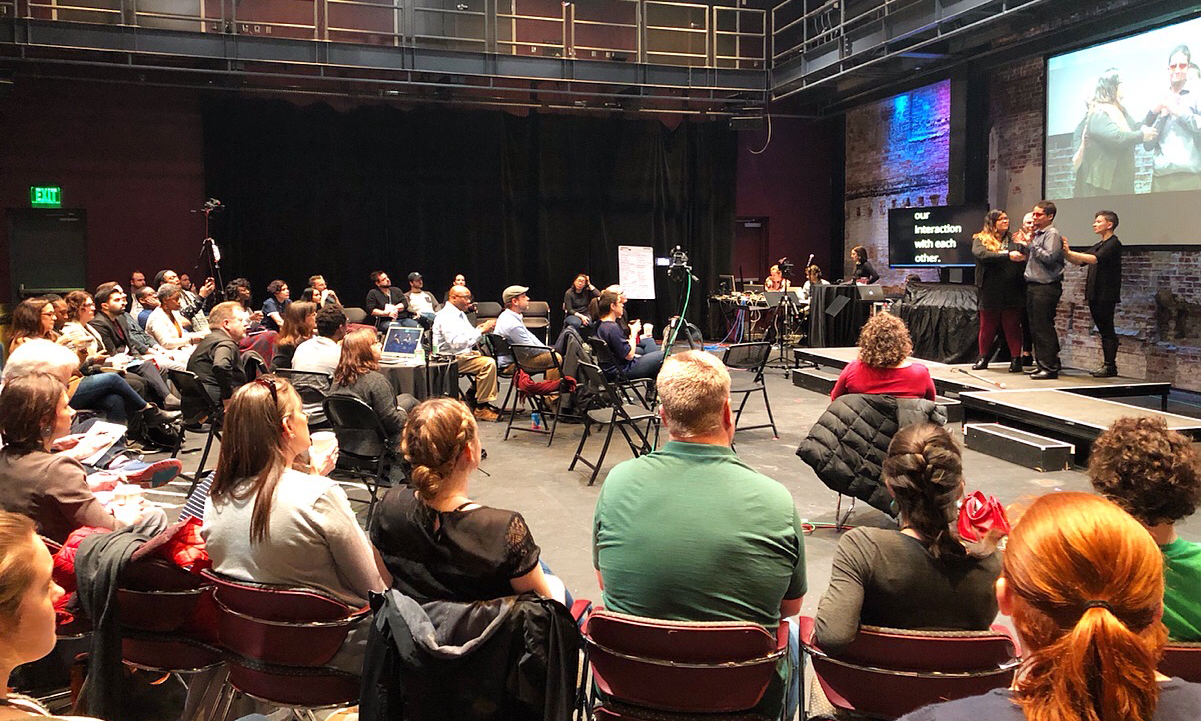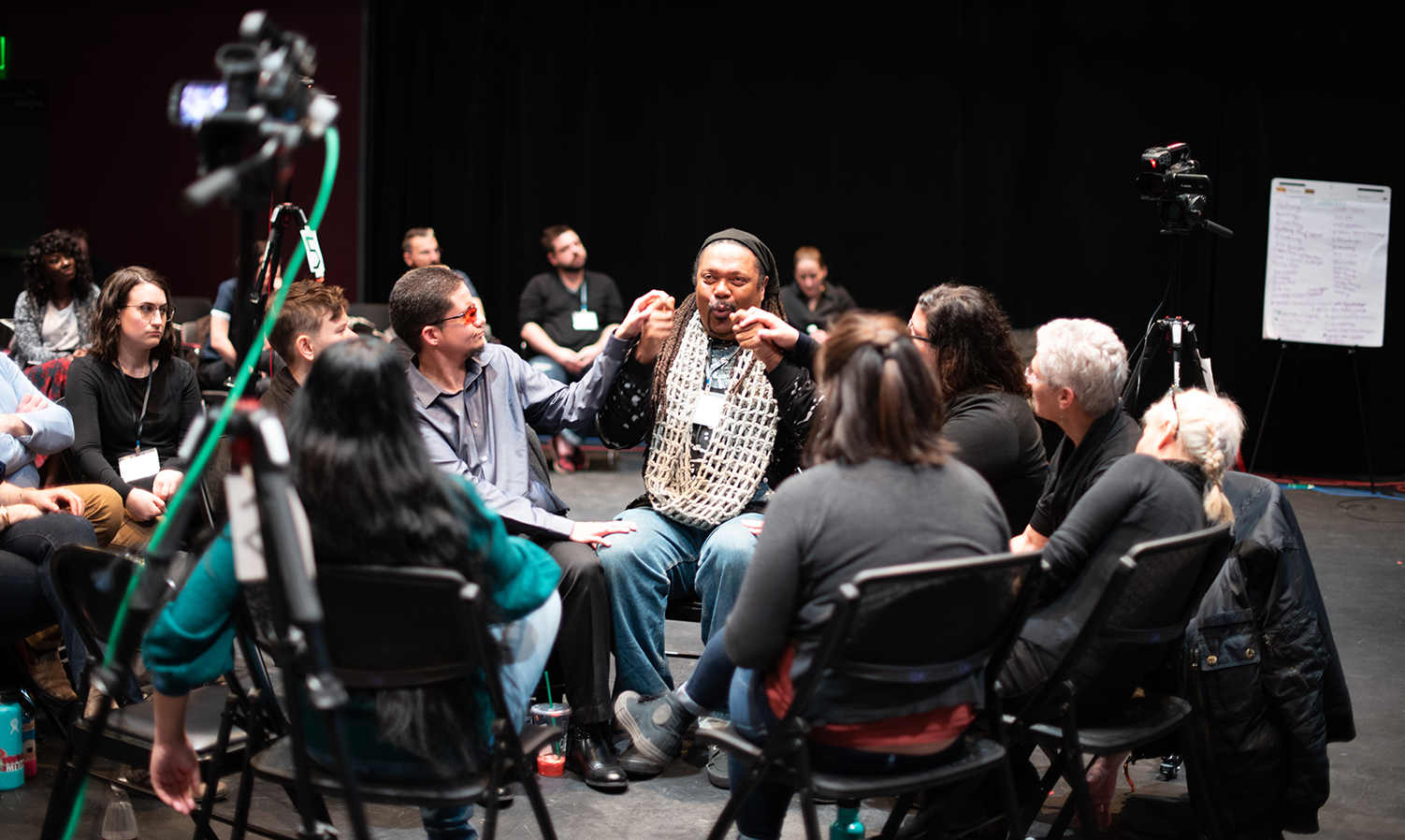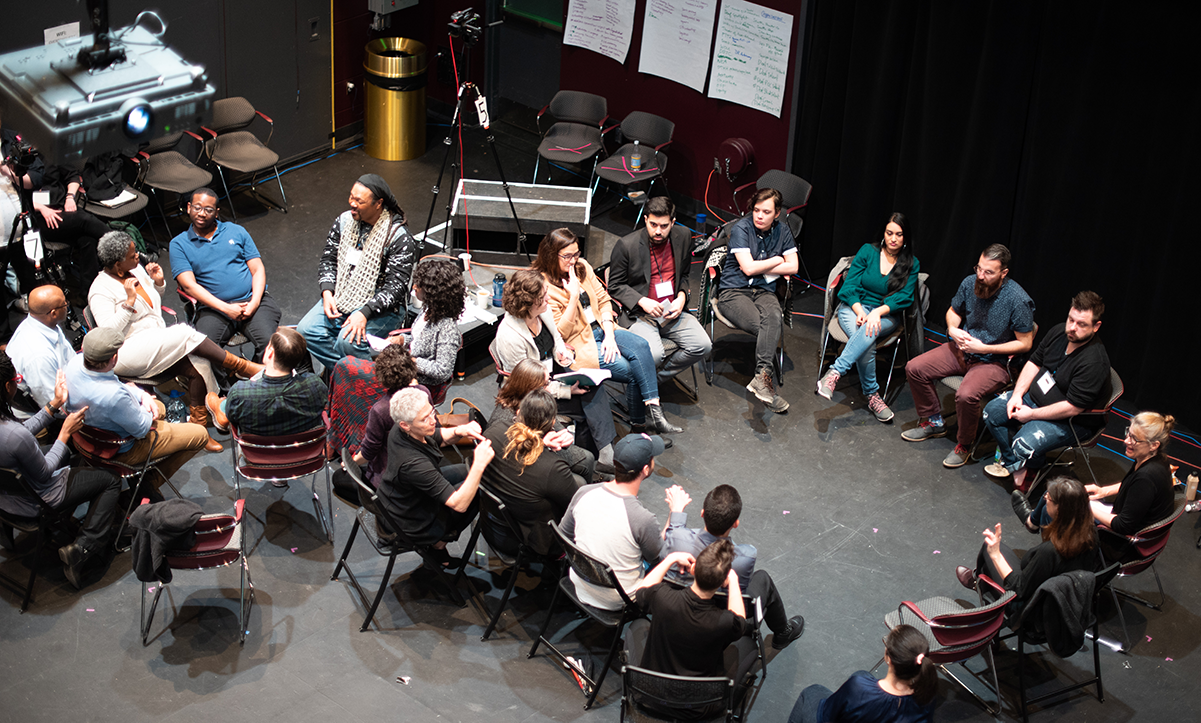Thirty Deaf, DeafBlind, and hard of hearing (DDBHH) theatre artists, administrators, and scholars gathered in Boston 15-17 March 2019 for the Deaf Theatre Action Planning Session (DTAPS). The idea for DTAPS, one of four proposed convenings selected as part of the HowlRound Challenge, grew out of the 2016 National Endowment of the Arts (NEA) roundtable Creating Opportunities for Deaf Theatre Artists. The purpose was twofold: to develop a future-focused, action-oriented plan for a national network and to create training-to-production pipelines that will foster the long-term education and advancement of Deaf theatre artists. The Boston convening ended with working groups having been organized to develop projects such as a playwriting retreat, a community database, and a national organization to provide professional development opportunities for DDBHH theatre artists.
In the call for participants, the convening organizers—DJ Kurs, Ethan Sinnott, Rachel Grossman, and Tyrone Giordano—asked: “What if Deaf theatre artists came together with the will to stop waiting for others to mobilize us or accept us, and started creating the conditions for us to self-produce, promote, create, and advance?” To bring these conditions into existence, the organizers (joined by Alexandria Wailes and Patty Liang shortly into the planning process) put together the three-day gathering with an eye towards capacity building through identification and creation of shared resources, networks, and concrete plans. As a Deaf scholar who works on Deaf theatre history and performance, I was honored to participate in and document the convening.





Comments
The article is just the start of the conversation—we want to know what you think about this subject, too! HowlRound is a space for knowledge-sharing, and we welcome spirited, thoughtful, and on-topic dialogue. Find our full comments policy here